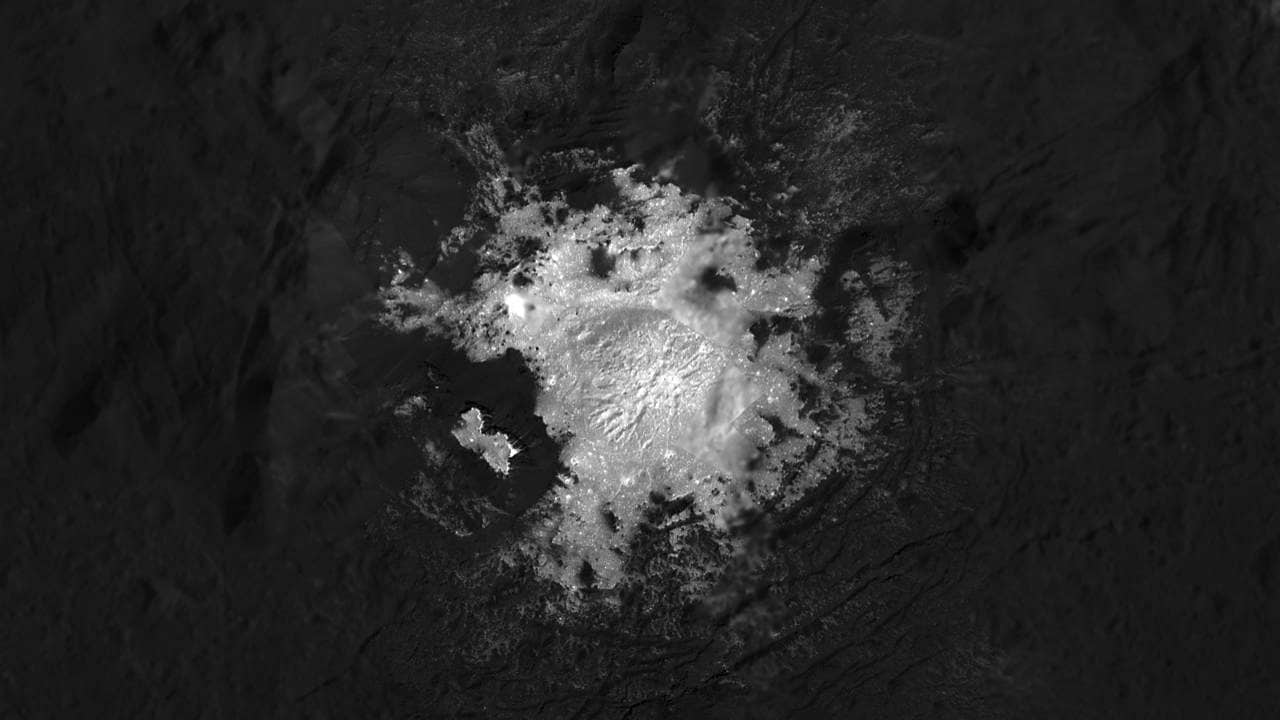FP TrendingAug 11, 2020 18:19:54 IST
Ceres, the dwarf planet situated in the asteroid belt between Jupiter and Mars, has kept scientists hooked for a long time now. The largest world in the asteroid belt, Ceres was originally thought to be a space rock but its unexplained bright spots kept scientists looking for more.
Now researchers have found the exact reason behind the cause of these spots. These deposits were formed by salty liquid bubbling up to the surface of the Occator Crater and the liquid was coming from a huge brine reservoir present under the surface.
Extended mission findings from NASA’s Dawn spacecraft were studied to come to this conclusion. The results have been published across seven studies in the journal Nature on Monday.

This mosaic of Cerealia Facula inside the dwarf planet Ceres’ Occator Crater is based on images obtained by NASA’s Dawn spacecraft in its second extended mission. Image credit: NASA/JPL-Caltech/UCLA/MPS/DLR/IDA NASA/JPL-Caltech/UCLA/MPS/DLR/IDA
Captured just before the end of Dawn’s mission, the high resolution data of the bright spots on Ceres revealed that it was an “active ocean world”. The data proved that the dwarf planet is in fact a hub of salty water reservoirs. Thus, Ceres can now be called the only body that scientists know for certain, is an ocean world barring our home planet.
The internal ocean of Ceres is “full of rocks and non-icy materials” and it is yet not clear whether the dwarf planet can be habitable. Julie Castillo-Rogez and Marc Rayman of the Jet Propulsion Laboratory (JPL), California wrote in their paper that the highly reflective material in Occator was visible as a bright spot in Hubble images as well. When Dawn went in closer (within 35 km of ceres’ surface), the single bright spot turned into two distinct regions. At the crater centre, there was the “sharply outlined Cerealia Facula” and there was a set of more diffused deposits called the Vinalia Faculae to the east.
These data were collected by Dawn in between June and October 2018 at the end of its mission, according to CNET. The report added that Ceres is about the size of a mini Pluto and the latest imagery solved the reasoning behind another feature on Ceres. The Vinalia Faculae are different from Cerealia due to Vinalia being fed by a “deeper source of liquid welling up” from within the inner sub layers of Ceres.
Find latest and upcoming tech gadgets online on Tech2 Gadgets. Get technology news, gadgets reviews & ratings. Popular gadgets including laptop, tablet and mobile specifications, features, prices, comparison.
Post a Comment